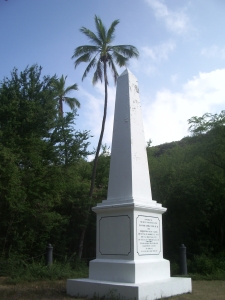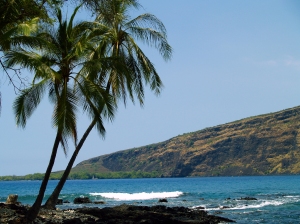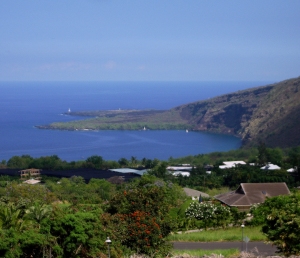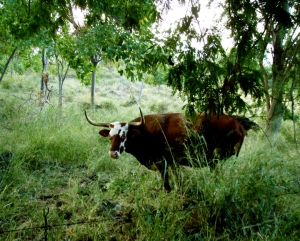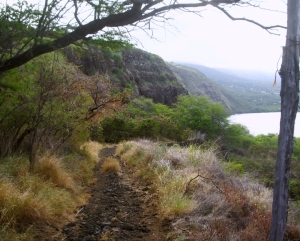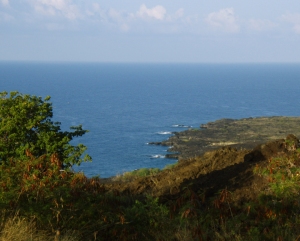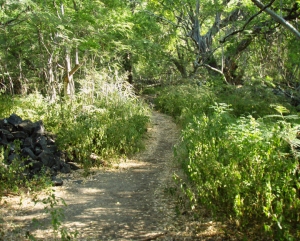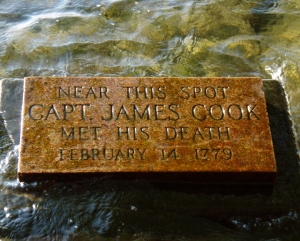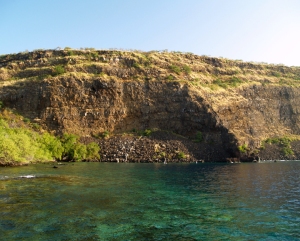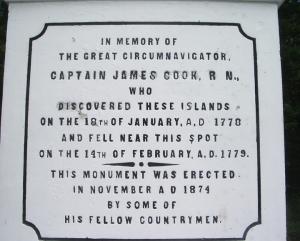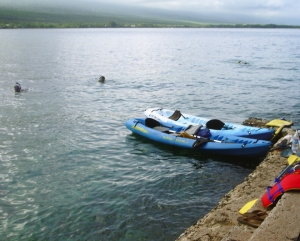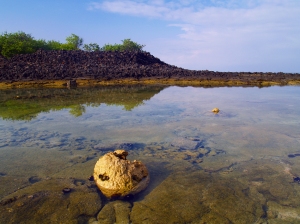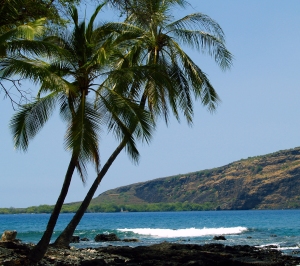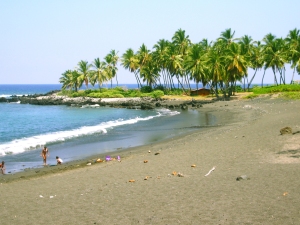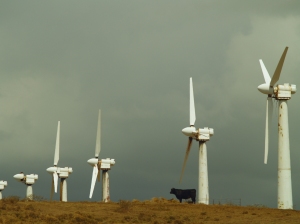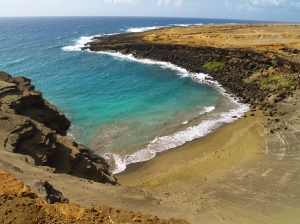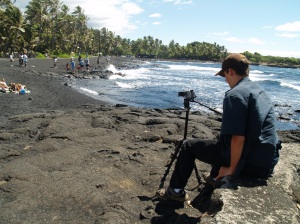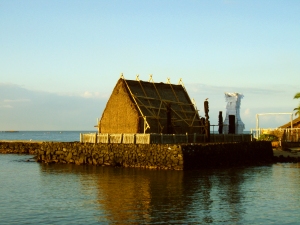Hawaii is, in fact, an island that is served by very few roads, that many people come to visit each year and that makes most of its wealth from the tourism industry. Given this, it's quite surprising how hard it can be to find useful, reliable and up-to-date information about anything from "is your favorite restaurant still in business" to "how's the snorkeling this month?".
Road names are in the unfamiliar Hawaiian language; friendly locals give helpful directions, but in rapid-fire pigeon English using landmarks unfamiliar to the visitor and many guidebooks are either woefully out of date or flat wrong. The first time visitor to Hawaii may be overwhelmed when bombarded by advertising disguised as visitor information, overzealous salespeople from rapacious time-share resorts and racks and racks of of advertising for tours, attractions and restaurants.
Even the experienced Hawaii traveler may find it difficult to ferret out the information he needs to find a unique, secluded or unusual experience in Paradise. Finding current, reliable information on hikes on the Big Island can be equally frustrating.
Clearly, the visitor to Hawaii can use some help finding special places in general and information about, and help getting to, the best hikes on Hawaii Island.
To help you find the more secluded, wild and exotic destinations in particular, and to help you get more out of your Hawaii vacation in general, Tour Guide Hawaii has released a brand new iPhone/iPod Touch App . This "must have" travel app is packed with hours of informative video on the most interesting places on Hawaii; helps navigate you to all the most popular visitor destinations, the most interesting attractions, the most romantic and secluded beaches; helps you effortlessly find hikes, snorkel spots, historical and cultural landmarks, shopping and dining. And of course, our new App includes directions to, and rating of, all the public restrooms! Learn all about the App, here.
But first, let's talk about one of the finest short hikes on the Island of Hawaii.
Hiking to Captain Cook Monument, on the Kona Coast of Hawaii
This hike is a fine walk through tall grass, open lava fields and dense, dryland forest, opening onto one of the most pristine ocean beaches in the world. Hiking down to the Captain Cook’s Monument from Highway 11 is a great deal of fun—great scenery, wonderful trail that involves complete immersion in Hawai’ian pre- and post-contact history and offers the opportunity for some of the finest snorkeling anywhere on the planet. However, the return hike is hot, thirsty and strenuous; but it is also highly rewarding, granting panoramic views all up and down the Kona Coast.
The trail leaves the Napo’opo’o Road just 500 feet below where it drops off Highway 11 near a large avocado tree, right across from a group of three coconut trees, right at telephone pole number 4; parking is tight, but safe. The parking spots and trailhead will show signs of obvious use, usually in the form of recently deposited horse apples from the many trail riders frequenting the area.
The first avocado tree is the harbinger of wonderful things to come, as the trail passes through an area rich in guava, mango, papaya and avocado that are free for the gathering. The 2.5-mile hike takes about 1-1 1/2 hours to descend, somewhat more time to come back up.
After following a jeep road for about 50 feet, the trail turns left when the jeep road turns right onto private property. Although overgrown by tall grass for the next half mile, the trail runs more or less straight down the left side of a rock wall to the sea.
As the pitch straightens out, keep to the left when the trail first forks and proceed to the beach. You will strike shore several hundred feet northwest of the monument—stroll through the remains of Ka’awaloa Village along the beach on your way to pay homage to Europe’s most prolific explorer, James Cook.
Many people fail to notice the small concrete marker in the tidal zone marking the place where Cook skirmished with the Natives and Was killed, however, this marker lies at the spot where the trail breaks through the underbrush at the ocean's edge.
Remember to be respectful of the remains of the Hawaiian Village--it contains numerous spots still sacred to the natives; do not disturb or deface rock wall, temple pavements. It is best to simply view the ruins from the trail and move along. There are no facilities for garbage, used toilet paper, etc; remember to pack out everything you packed in--this includes your toilet paper. The bay is home to a beleaguered coral habitat--so not touch or stand on the coral when snorkeling. There are also sea turtles and numerous dolphin in the bay--do not approach or harass them--this is not only illegal, it's dangerous. For more information of how to treat coral wild animals in the snorkeling environment, please go here.
There is no drinking water or toilet facilities available at the monument, so come prepared. It's also a good idea to bring about 1/2 gallon of fresh water per person to rinse off with after snorkeling, and dry short to change into--hiking uphill in wet, salty clothes is extremely unpleasant.
Remember to bear right at the trail junction when returning uphill, or you will face a long, hot and unpleasant time wandering the a’a fields of Napo’opo’o.
It is also possible, but much less pleasant, to hike most of the way to the monument along the shoreline from Napo’opo’o. This hike is an uninteresting exercise in scrambling over boulders along the beach and contains at least two places that have to be swum in rough water; as such, the safety of this trek is totally at the whim of ocean tides and swells. Highly not recommended.
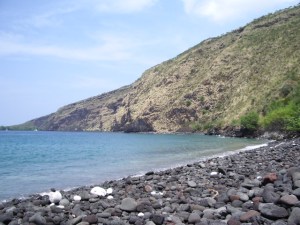
- Looking from Hikiau Heiau to Cook Monument; the Cliffs and Boulders Make Hiking Along the Shoreline to the Monument Both Difficult and Extremely Dangerous--DO NOT ATTEMPT THIS: Photo by Donnie MacGowan
To see the new iPhone/iPod Touch App, please visit http://www.tourguidehawaii.com/iphone.html. The best of Tour Guide Hawaii's free content about traveling to, and exploring, the Big island, can be found here. For more information on traveling to Hawaii in general and on touring the Big Island in particular, please also visit www.tourguidehawaii.com and www.lovingthebigisland.wordpress.com.
Copyright 2009 by Frank Burgess; photography copyright 2009 by Donald B. MacGowan. All rights reserved.
